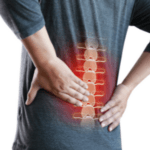
Over the next 12 months HSE is focusing heavily on health in the food industry, specifically with regard to musculoskeletal issues. David Shorrock examines current regulations and tools employers can utilise to assess the risks to their workforce and avoid heavy fines.
An astonishing 8.3 million working days were lost to musculoskeletal disorders (MSDs) during the year to April 2014.1 These figures include work-related upper limb disorders (WRULDs).
The injury rate in the food and drink manufacturing sector is double the manufacturing sector average. HSE estimates that 25 per cent of these injuries are MSDs.
Despite these figures, enforcement by HSE relating to MSDs remains low. In the last 10 years there have been only six successful prosecutions under the Manual Handling Operation Regulations (MHOR). The average fine was £4,500. Since 2009 only 105 enforcement notices have been served in the manufacturing sector that stated a breach of MHOR. Thirty-five of these were in food and drink.
Why are MSD-related ill health figures so high? Is it because they do not involve the headline grabbing incidents that result in serious and fatal outcomes and as a result the general awareness of the risks is poor? Are MSDs generally accepted as being an occupational hazard involving so many variables that it is not reasonably practicable to manage them out? Or is it simply down to employers not identifying, understanding or properly managing the risks? Scrutiny of the enforcement notices served by HSE suggests the latter is true and as a result incidence rates of MSDs remain high.
 Food manufacturing
Food manufacturing
The Manual Handling Operations Regulations set out a very clear hierarchy of control. Avoidance sits at the top. If manual handling cannot be avoided, risk assessment must identify the appropriate control measures to reduce the risk to the lowest level reasonably practicable. These measures include introducing engineering solutions. If engineering solutions aren’t available, then employers should reduce the weight and frequency of the activity, introduce safe systems of work and provide information, instruction and training to staff as a last resort.
The food manufacturing industry contains many tasks that do not involve repeated heavy lifting but low weight, high frequency, repetitive tasks. The industry as a whole has dealt with the risks of lifting heavy weights over the last 15 years. For example, manual handling of 32kg sacks of flour has largely become a thing of the past. Repetitive tasks such as packing, butchery, loading of raw materials and stacking finished product on production lines have arguably overtaken heavy lifting as the most common cause of injury.
Useful tools
HSE has published two tools to assist employers in assessing the risks of MSDs and WRULDs. The “MAC” tool2 (Manual Handling Assessment Chart) and the “ART” tool3 (Assessment of Repetitive Tasks) provide a framework to assess and walk assessors through the process of identifying whether certain tasks are likely to increase the risk of the MSDs.
The MAC tool considers the following; the load weight and the frequency of lifting, the hand distance from the lower back, the vertical lift region (that is, are you lifting above your head or down by your feet?), torso twisting and sideways bending, postural constraints (do you have sufficient space to carry out the lift?), grip, floor surfaces and other environmental factors.
I have always considered the MAC tool limited in value because it produces a numerical value for a particular task but provides no cross reference or guidance to help decide what the appropriate controls should be. Yes, it highlights the factors to consider in undertaking a risk assessment but it only provides the assessor with a league table of processes ranked by the severity of the subjectively assessed risk.
On the other hand, the ART tool is much more valuable to assess the risk of WRULDs due to repetitive tasks. It breaks the task down into a number of different elements and requires more detailed observation. It has similar limitations to the MAC tool in that it contains a formula that will produce a number at the end but it gives more guidance about where the focus should be.
The ART tool relies on more extensive observation of the task and breaks it down into its component parts. It considers arm movements and repetition, the type of force applied and how much is required over what period of time, it deals with posture in detail and then considers environment, pace of work, breaks and other factors to produce an exposure score. Improving any element of the task should produce a lower numerical outcome that should reflect a reduced risk.
HSE is targeting the meat and poultry processing industry and bread, cake, biscuit and dairy product manufacturers in a year-long-initiative to try to eliminate MSDs in these sectors and to reduce the days lost to industry. These industries are diverse in character and the mechanisms by which MSDs occur are equally diverse but they all result in the same effect – significant health issues that can persist for a long period and be debilitating for the employee who suffers them.
Production line butchery is a good example to consider and can result in upper limb disorders due to the repetitive nature of the task. The level of risk is not determined by repetition alone but a number of other factors.
Main hazards
The British Meat Processors Association (BMPA) has published guidance4 that tackles such issues. It points to the following as the main hazards – repetitive work, uncomfortable postures, sustained or excessive force, long periods carrying out the same task, poor organisation of the working environment (this includes temperature of the workplace, demands on employees for productivity, lack of breaks) and differences between individuals and their susceptibility to WRULDs.
A cold working environment with employees of differing heights and physical capabilities working at standard height benches, doing the same cut over long shifts with few breaks already sounds like worst-case scenario. Add into the equation meat that is not defrosted properly, blunt knives and a lack of training and supervision and you increase the risk of injury significantly.
The temperature of the meat is an interesting issue where control of MSDs can conflict with food safety considerations. I have encountered situations where meat is being processed while still almost frozen and employers quote food safety guidance as an excuse for accepting an increased risk to employees. Red meat must remain below 7°C during storage and processing, however, the amount of force required to make the cut is significantly higher at 3°C than at 6°C. Even below the required 7°C small reductions in temperature can have a marked effect on the ease of processing. In addition, at lower temperatures the risk of knife injuries increases significantly as the force required to process the meat increases. Striking the correct balance between these different considerations is vital.
With this in mind, how do employers approach controlling the risk? A suitable and sufficient assessment (required by the Management of Health and Safety at Work Regulations) should include consideration of at least the aforementioned factors to determine the level of risk and what controls are required. In an ideal scenario the environmental issues are designed out. Workstations are appropriately designed, are adjustable so they can be set at an appropriate height by the employee and processing equipment is provided that reduces to a minimum the amount of force required to complete the task. An assessment of the residual risks is then required to resolve the ergonomic issues that HSE’s ART tool refers to.
Workplace monitoring
Health surveillance and systems to monitor and encourage employees to report any issues they may be experiencing are crucial. This helps identify high-risk activities and diagnose MSDs at an early stage to prevent more serious injuries and reduce the cost to the employer. Unlike the Control of Vibration at Work or COSHH regulations for example, MHOR has no specific requirement for health surveillance but simply links back to the general requirement under the management regulations to provide appropriate surveillance as identified by the risk assessment. This often results in none being provided.
Some employers proactively monitor MSDs in the workplace and have links to local physiotherapists should employees report such a problem. One large food manufacturer I encountered some years ago did just that. Irrespective of where an injury occurred or the circumstances (it could have been as a result of digging the garden over the weekend) the employer referred the employee to the physiotherapist immediately to assess and treat the injury as required.
It was in the interests of the company to have its employee at work and early intervention, whatever the cause of the problem, had a significant impact on absence rates due to MSDs. During the first year, including taking into account set up costs, the scheme was at least cost neutral and absence rates fell. During subsequent years the company predicted that it would save tens of thousands of pounds but would, more importantly, have a positive effect on the morale of the workforce and make them more likely to report MSDs at the earliest opportunity.
Health monitoring is arguably the most important factor in reducing the impact of MSDs to individuals and business. Despite the assessment, control and physical systems in place, each individual can be affected differently. Monitoring allows hotspots to be identified. This informs the review process, assists in prioritising further modifications but also helps to identify those employees for whom a particular task is not appropriate due to a limitation specific to them.
HSE’s inspections will scrutinise management systems, risk assessment, whether the benchmark standards have been achieved, for example, by using the MAC and ART tools, whether employees have been provided with appropriate information, instruction and training and whether some form of health surveillance or monitoring is in place. Any material breach of the law will attract Fee for Intervention (FFI). The number of enforcement notices is certain to rise significantly as a result of this programme of inspection as will revenues from FFI that are likely to increase some way beyond the total fines handed out during the last decade.
David Shorrock is the owner of DS Risk Management Ltd
References
- Musculoskeletal Disorders in Great Britain 2014. www.hse.gov.uk/statistics/causdis/musculoskeletal/msd.pdf
- HSE – Manual Handling Assessment Charts (the MAC tool). www.hse.gov.uk/pubns/indg383.pdf
- HSE – Assessment of Repetitive Tasks of the upper limbs. (the ART tool). www.hse.gov.uk/pubns/indg438.pdf
- British Meat Processors Association – Health and safety guidance notes for the meat industry. http://www.bmpa.uk.com/_Attachments/Resources/971_S4.pdf
Approaches to managing the risks associated Musculoskeletal disorders
In this episode of the Safety & Health Podcast, we hear from Matt Birtles, Principal Ergonomics Consultant at HSE’s Science and Research Centre, about the different approaches to managing the risks associated with Musculoskeletal disorders.
Matt, an ergonomics and human factors expert, shares his thoughts on why MSDs are important, the various prevalent rates across the UK, what you can do within your own organisation and the Risk Management process surrounding MSD’s.



